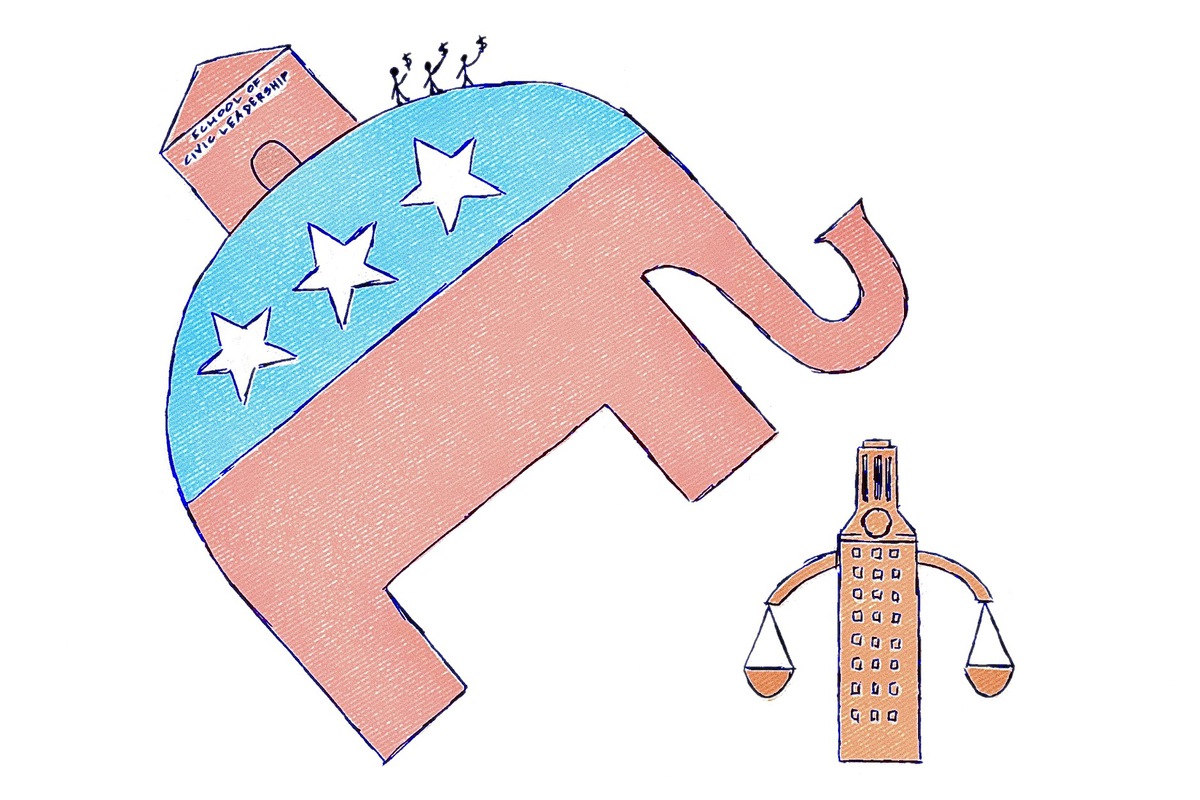Editor's note: This column is part of a point/counterpoint on proposed undergraduate tuition increases. You can find its companion column, arguing in support of the proposed increases, here.
Calling last Tuesday’s Student Government meeting on tuition issues a “town hall” — as named by the student leaders who organized it, SG President Horacio Villarreal, Senate of College Councils President Andrew Clark and Graduate Student Assembly President Columbia Mishra, all members of the ad-hoc committee assembled by UT administrators to propose a tuition rate — is kind of like calling Jester a luxury dormitory or the “pizza” in the Littlefield Cafe actual pizza.
The evening was marked by a series of notably undemocratic proceedings that starkly contradicted the title of “town hall.” First, the agenda was never announced at the beginning of the meeting, prompting many students who were there for the tuition discussion to leave when another topic was brought up. Second, the students who stayed were prohibited from speaking during the presentation of the ad-hoc committee unless an SG representative would yield to them, although students could speak in a confusing open forum before the presentation. And third, the procedure for recognition was never made public.
More disturbing than the false claims to the evening’s inclusive, democratic design, however, was the groups’ embrace of the tired narrative on tuition issues, presented with the aid of a PowerPoint and administrators Dan Slesnick and Don Aleman.
The group reminded us that, with appropriations from the legislature on the decline, the University must find a way to offset the loss in revenue. They showed us graphs revealing that UT is relatively inexpensive compared to “comparable” universities. Finally, they recommended tuition increases based on the suggestions of the 2011 Tuition Policy Advisory Committees report, which they cited as the most recent “comprehensive” document in which the student opinion was “adequately surveyed.”
Unfortunately, this story is not true.
Though state revenues have declined overall in recent years, legislative appropriations to the University have fluctuated greatly in this period, resulting in a “decrease” in funding that is not even statistically significant. The relationship between state appropriations and tuition rates is unclear, given that increases in state appropriations have failed to generate reductions in tuition and that tuition cost has increased 27.4 times faster than state appropriations have decreased. Rather than directly supplanting legislative appropriations, as the ad-hoc committee suggested, the money generated from a tuition increase go beyond covering these “losses.”
The graph presented on tuition cost at UT relative to other, similar-tier universities is also misleading. The graph, detailing the cost of total appropriations and tuition cost per student, shows UT at the bottom, leading the observer to believe that UT can afford to raise tuition and continue to remain “competitive.” However, this fails to account for cost-of-living considerations and income levels across states, which are undoubtedly tied to tuition rates.
Only one of the 11 schools included in the presentation — Indiana University — is in a city where the cost of living is lower than in Austin, and only two schools are in states where the median family income is lower than it is in Texas. Considering these factors, UT’s location on the bottom of this graph has less to do with its relative affordability than it does with socioeconomics.
Finally, the suggestion that the $127 increase in tuition per in-state student is marginal fails to account for the already egregiously high tuition rates that have been on the increase during a period of decreasing financial aid and grant support to students. Calling this increase “small” only serves to mask these patterns and muddle the reality that such a measure would disproportionately affect working-class and minority students.
If student leaders want to represent the student voice they should look beyond recycled PowerPoint slides and uphold the first and only student referendum on tuition, which showed that students overwhelmingly opposed tuition increases when it was voted on during general SG elections two years ago. Not only is this document more recent than the 2011 TPAC report the committee deferred to, but it is the only isolated measure of the student voice on record.
Griswold is a government senior from Indianapolis.
Correction: An earlier version of this article misidentified the open forum portion of the town hall as having occurred after the ad hoc committee's presentation. It actually occurred before the presentation.




















